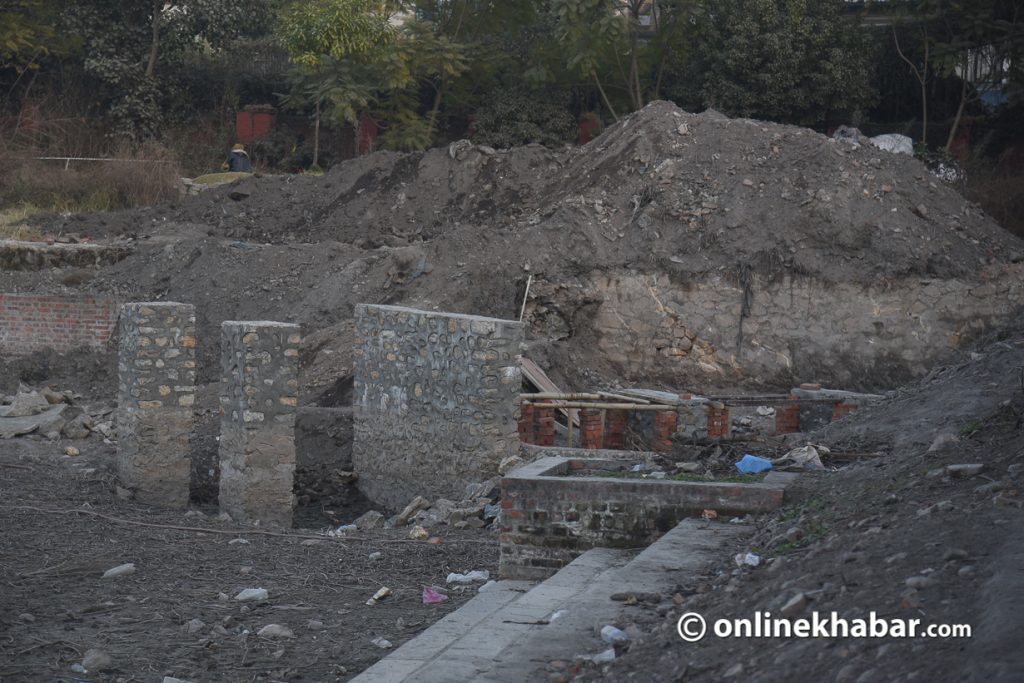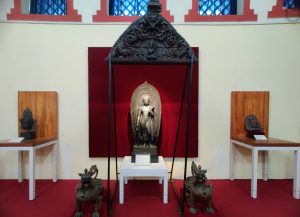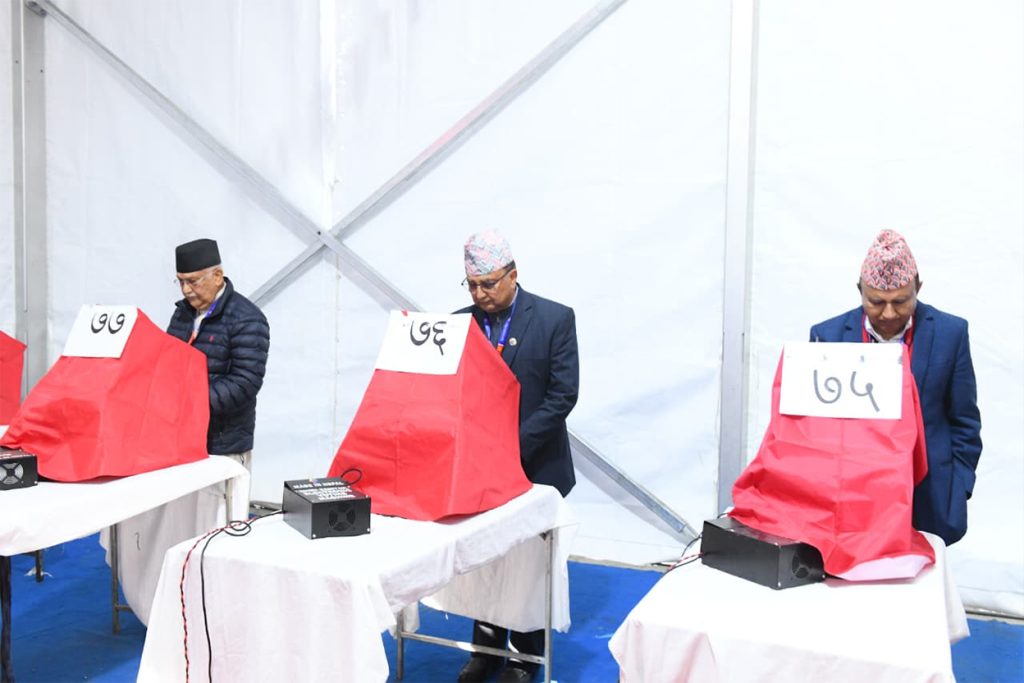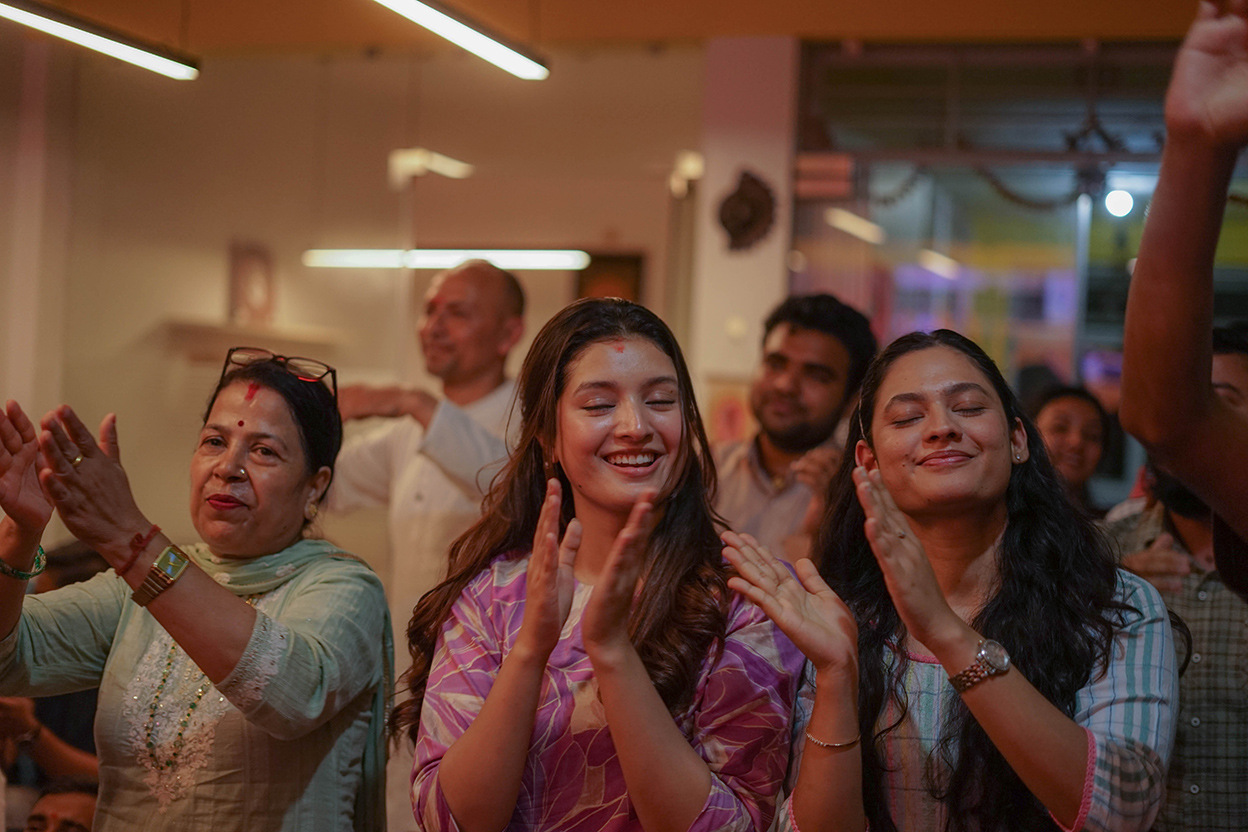On one hand, the Kathmandu metropolitan city is gearing up to commercialise Kamalpokhari in Kathmandu. On the other, activists are gearing up to protest the local authority’s ‘haphazard’ act. Amid this tussle, many times, the protestors have gone unheard. To avoid such fate again with Kamalpokhari, a group of heritage activists reached Bhandharkhal Pond inside the Patan Museum on Tuesday, in search of a more substantial solution for their cause.
There, they met the local activists and museum officials who are working together to clean and revive the pond to its full glory. After that, the group of activists also started to envision the same for Kamalpokhari and other neglected ponds and lo:hitis of Kathmandu.

Initiative at Bhandarkhal Pond
The Bhandarkhal Pond is situated at the Bhandarkhal Garden, the southern courtyard of the Patan Museum. It was built during King Siddhi Narasimha Malla’s reign in 1647 and said to be used by kings and royal families of Patan.
An assistant guide for the museum, Sunil Pandey, says, “The pond was last cleaned 10 years ago but was not thoroughly. So, the museum administration [under the Department of Archaeology] has started its cleaning now, feeling the need.”
The cleaning and maintenance of the pond is a recent endeavour jointly started in the initiative of locals led by Robin Kapali and the museum’s executive director Saraswati Singh.
Kapali says, “I and my team had worked for the Bhimsen Temple in Patan in the past. We were approached by the Museum ED [Singh] to clean and revive the pond as we had the team and experience. Then, we mobilised the team, worked day and night for a week.”
The team took out the water and fish for the cleanup. “But, we did not completely take out the fish and replaced water for them to survive in their natural habitat. After cleaning, we will be pouring out the water to replenish the pond.”
Takeaways from Bhandarkhal
The strongest voice among the activists in Kamalpokhari is against the Kathmandu city government’s concretisation plan. Activist Alok Siddhi Tuladhar stresses, “Our only request is that the authority should leave the base of the pond as it is. Once they lay tile in the base, there will be absolutely no way we can revive it to its original glory.”

He confirms his view with the structure of the Bhandarkhal Pond and how the museum is taking care of the site. He adds the same can be adopted in Kamalpokhari.
Here, Pandey explains, “The base of the Bhandarkhal Pond is black soil, which has been kept intact from the start. The surrounding of the pond [stone-tile walls] is also being kept the same for its rustic, ancient look.”
However, Pandey adds, “In modern times, we have added a layer of plastic-like but disposable material to stop water leakage, with another layer of brick tiles. But, this is to make sure the water from the pond does not leak. Owing to the concrete jungle that the valley has become, the ground cannot absorb water and our sources have dried up. The same is the case with the source of this pond, at Tika Bhairav. So, we had to fill the pond with water manually.”
Ponds after ponds, activists have voiced that ponds and hitis are unique to Nepal, and they were essential to fulfil the water supply in the Valley.
Pandey seconds, “The ancient engineering was very profound. They understood the concept of gravity and laid terracotta pipes from the source to the ponds and spouts in the city. This ensured that the rainwater absorbed and collected in the pipes from all over the valley would keep the water resources in the city full.”
But, bringing water to the city from kilometres away was not an easy task. This is why the ponds and hitis were made at various places to work as a ‘recharge’ pond or water resources for others, according to him
The officials at the museum have adapted this very technique and tweaked the water system in such a way that a portion of water from the pond goes to the tusa hiti (water spout) at Sundari Chok of the museum while the same water flows back to lo: hiti (stone water spout) at the Bhandarkhal pond for a recharge source for each other.

Tuladhar says visiting Bhandarkhal has made it clear that the revival of ponds is possible with the local’s initiatives. He, here, complains, “Locals around Kamalpokhari are very happy that they will get the modern park, the entertainment, and parking. But, all are neglecting the importance of the pond. They have not realised why ponds are important.”
If locals in Kathmandu were aware and active like in Patan and even Bhaktapur, a handful of activists would not have been the only ones shouting against the “inhumane act” in and around the ponds, according to him.
The activist adds the problem is there with the authorities and their ‘intentions’. He adds that the problem lies with their lack of ownership too. “The authorities, when questioned, always seem to pass the buck to others.”
“If the museum officials, also local authorities, can take initiatives at Bhandarkhal, why cannot Kathmandu’s local authorities and the locals take initiatives to respect and keep the local heritage intact?” he questions, “The intention of authorities in Kathmandu, however, seems to be to commercialise and make money at the expense of heritage sites while the locals are happy with the development.”
The biggest takeaway, Tuladhar says, is the sense of direction that Bhandarkhal provides. “Now, we want to go to the Kathmandu Mayor Bidya Sundar Shakya and give him our technical plan that will focus on keeping the base [of Kamalpokhari] intact. We want to show there is a better solution, and hopefully, they will consider it. Of course, we will continue talking about it.”

























